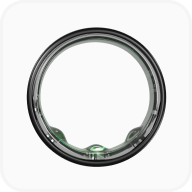
Understanding body types: A guide to different body shapes for men and women
Understanding your body type can be crucial for optimising fitness and nutrition plans tailored specifically to your needs. This guide will delve into the different types of body shapes for men and women, explain how to determine your body type, and discuss how to tailor your fitness and nutrition plans accordingly.
Overview of body types
Body types, often referred to as somatotypes, are typically classified into three main categories: ectomorph, mesomorph, and endomorph. Each type has distinct characteristics that influence physical appearance, metabolism, and how one responds to diet and exercise.
1. Ectomorph
Ectomorphs are typically slim with a light build and narrow shoulders and hips. They have a fast metabolism, making it difficult to gain weight and muscle. Ectomorphs often have long limbs and less body fat.
2. Mesomorph
Mesomorphs have a more muscular and athletic build. They gain muscle easily and have a medium frame. Mesomorphs tend to have broad shoulders, a narrow waist, and an efficient metabolism that allows them to maintain their physique with moderate effort.

3. Endomorph
Endomorphs have a higher tendency to store body fat, often with a rounder and softer body shape. They may find it challenging to lose weight and need to be more cautious with their diet. Endomorphs usually have a larger bone structure and can build muscle easily, but they also gain fat quickly.
How to determine your body type
Determining your body type involves a combination of observing physical characteristics and considering metabolic tendencies. Here are some steps to help you identify your body type:
1. Assess your body shape:
Look at your overall shape in a mirror. Are you naturally lean, muscular, or prone to carrying more body fat?
2. Measure your frame:
Measure key areas such as shoulders, waist, and hips. Ectomorphs typically have a more linear measurement, mesomorphs have broader shoulders relative to their waist, and endomorphs have wider hips and a thicker waist.
3. Consider your metabolism:
Reflect on how easily you gain or lose weight. Fast metabolism and difficulty gaining weight suggest an ectomorph, while easily gaining weight indicates an endomorph. Mesomorphs generally have a balanced metabolism.

4. Track your progress:
Observe how your body responds to different diets and exercise regimes. This can give insights into your metabolic type and help refine your classification.
Tailoring fitness and nutrition to your body type
Recognising your body type can help you tailor your fitness and nutrition plans for more effective results.
1. Ectomorphs
- Fitness: Ectomorphs should focus on strength training to build muscle mass. Compound movements like squats, deadlifts, and bench presses are beneficial. Limit cardio to avoid excessive calorie burn.
- Nutrition: A higher calorie diet with a good balance of protein, carbohydrates, and fats is essential. Frequent meals and snacks can help maintain energy levels and promote muscle gain

2. Mesomorphs
- Fitness: Mesomorphs benefit from a mix of strength training and cardio. High-intensity interval training (HIIT) and weight lifting can help maintain their muscular build and keep body fat in check.
- Nutrition: A balanced diet with a slight emphasis on protein can help support muscle growth. Monitoring calorie intake to avoid excessive weight gain is crucial.
3. Endomorphs
- Fitness: Endomorphs should focus on a combination of cardio and strength training to boost metabolism and reduce body fat. Activities like running, cycling, and circuit training are effective.

- Nutrition: A diet lower in carbohydrates and higher in protein and healthy fats can help manage weight. Portion control and regular, smaller meals can aid in weight loss efforts.
Conclusion
Understanding your body type is a valuable tool in achieving your fitness and nutrition goals. By tailoring your approach to suit your specific somatotype, you can maximise your results and maintain a healthier lifestyle.
Remember, while body types provide a general framework, individual variations mean that personal experimentation and adjustments are often necessary.

Frequently Asked Questions
How can I determine my body type?
To determine your body type, observe your physical characteristics, measure key areas of your body, consider your metabolic tendencies, and track how your body responds to different diets and exercises.
Can my body type change over time?
While your basic somatotype is largely determined by genetics, factors such as ageing, hormonal changes, and significant lifestyle adjustments can influence your body composition and shape over time.

Are certain body types more prone to specific health issues?
Yes, different body types can be prone to specific health issues. For example, endomorphs may be at a higher risk for metabolic disorders like diabetes and cardiovascular disease due to their tendency to store fat. Understanding these tendencies can help in preventive health strategies.
What are the main body types, and how are they classified?
The main body types are ectomorph, mesomorph, and endomorph. They are classified based on physical characteristics such as frame size, muscle development, and fat distribution, as well as metabolic tendencies.
Do different body types require different diet plans?
Yes, different body types benefit from tailored diet plans. Ectomorphs may need a higher calorie intake to gain muscle, mesomorphs should balance protein and moderate calories to maintain their physique, and endomorphs might require a lower carbohydrate intake to manage weight effectively.

Can my body type change over time with diet and exercise?
While your genetic predisposition to a certain body type remains, diet and exercise can significantly alter your body composition. For instance, an endomorph can reduce body fat and gain muscle, appearing more mesomorphic, but the fundamental tendencies (such as easier fat gain) may persist.









